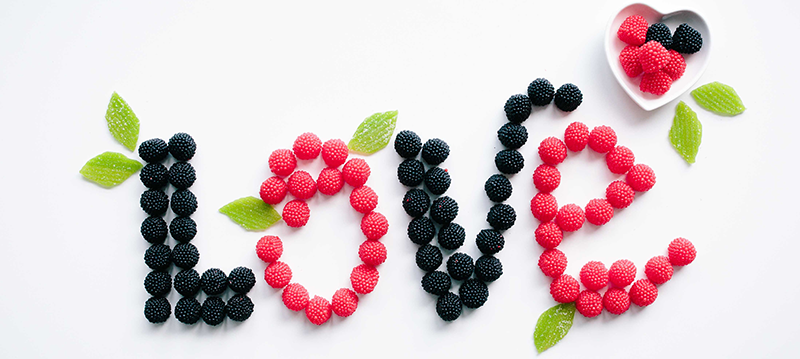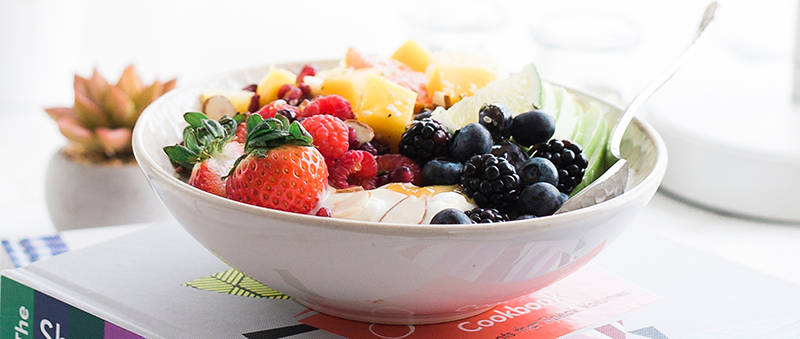How to Prevent Free Radicals From Damaging Your Health with the Help of Antioxidants
You have often heard that fruits and vegetables are good for your health. This article will help explain why.

Free radicals are chemicals that are capable of damaging cells and genetic material. They come from the food you eat, the air you breathe, sunlight’s action on the skin and eyes, and the body when it turns food into energy. Free radicals steal electrons from nearby substances, which can drastically alter those substances’ structure or function. They can change instructions coded in DNA, can make LDL (also called bad cholesterol) more likely to get trapped in the arteries, and can alter cell membranes1. Free radicals are thought to contribute to aging and the development of many degenerative or chronic diseases, such as cancer and atherosclerosis2,3,4. Experimental evidence links free radical production to biological damage5,6,7.
Substances that fight free radicals are often called antioxidants. Antioxidants give electrons to free radicals. The most common antioxidants are vitamin C, vitamin E, beta-carotene, selenium, and manganese. Different antioxidants have different roles. This means a wide variety of antioxidants will be more beneficial than any single antioxidant1.
The body makes its own antioxidants. However, some antioxidants cannot be synthesized in the body and must be obtained from diets, mainly from fruits or vegetables. Studies show consumption of fruits and vegetables can increase the plasma antioxidant capacity in humans8. Researchers found kale, blackberries, strawberries, spinach, blueberries, cranberries, and raspberries had the highest antioxidant capacities among common fruits and vegetables9.

Oxygen Radical Absorbance Capacity (ORAC) measures antioxidant capacities, including the ability to combat the effects of free radicals9. The average antioxidant intake from fruits and vegetables in the United States is 1200-1640 µmol TE/day8. Studies suggest an increase in antioxidant intake from fruits and vegetables of 1000-2000 µmol TE/day may be needed to bring about some of the beneficial effects associated with fruit and vegetable consumption9.
Fruits and vegetables have been shown to have many benefits. Consumption of fruits and vegetables has been associated with fewer incidences and deaths from cancer6,10,11,12,13,14,15,16,17,18,19, cardiovascular diseases, and cerebrovascular diseases20,21,22,23,24. Vegetarians and non-vegetarians with a high intake of fruits and vegetables have reduced blood pressure25,26. Research shows the antioxidants in fruits and vegetables help protect against diseases27,28,29,30,31,32,33,34.

The Harvard School of Public Health says the package of antioxidants, minerals, fiber, and other substances found naturally in fruits, vegetables, and whole grains will do a better job preventing chronic diseases than high doses of antioxidants will1.
References:
1. Antioxidants: Beyond the hype. (2016). Harvard School of Public Health.
2. Halliwell, B., & Chirico, S. (1993). Lipid peroxidation: its mechanism, measurement, and significance. Am. J. Clin. Nutr. 57, 715S–725S.
3. Loft, S., & Pousen, H.E. (1996). Cancer risk and oxidative DNA damage in man. J. Mol. Med. 74, 297–312.
4. Stahl, W., & Sies, H. (1997). Antioxidant Defense: Vitamins E and C and Carotenoids. Diabetes 46, S14–S18.
5. Halliwell, B., Gutteridge, J.M.C., & Cross, C.E. (1992). Free radicals, antioxidants, and human disease: where are we now?. J. Clin. Lab. Med. 119, 598–620.
6. Ames, B.N., Shigenaga, M.K., & Hagen, T.M. (1993). Oxidants, antioxidants, and the degenerative diseases of aging. Proc. Natl. Acad. Sci. USA 90, 7915–7922.
7. Maxwell, S.R. (1995). Prospects for the use of antioxidant therapies. Drugs 49, 345–361.
8. Cao, G., Booth, S., Sadowski, J., & Prior, R. (1998). Increases in human plasma antioxidant capacity after consumption of controlled diets high in fruit and vegetables. The American Journal of Clinical Nutrition, 68(5), 1081-7.
9. Prior, R., & Cao, G. (2000). Analysis of botanicals and dietary supplements for antioxidant capacity: A review. Journal Of Aoac International, 83(4), 950-956.
10. Doll, R. (1990). An overview of the epidemiological evidence linking diet and cancer. Proc. Nutr. Soc. 49, 119–131.
11. Dragsted, L., Strube, M., & Larsen, J. (1993). Cancer-protective factors in fruits and vegetables: Biochemical and biological background. Pharmacology & Toxicology, 72 Suppl 1, 116-35.
12. Willett, W. (1994). Diet and health - what should we eat. Science, 264(5158), 532-537.
13. Maeda, H., Katsuki, T., Akaike, T., & Yasutake, R. (1992). High Correlation between Lipid Peroxide Radical and Tumor‐promoter Effect: Suppression of Tumor Promotion in the Epstein‐Barr Virus/B‐Lymphocyte System and Scavenging of Alkyl Peroxide Radicals by Various Vegetable Extracts. Japanese Journal of Cancer Research, 83(9), 923-928.
14. Belman, S. (1983). Onion and garlic oils inhibit tumor promotion. Carcinogenesis, 4(8), 1063-1065.
15. Bresnick, E., Birt, D., Wolterman, K., Wheeler, M., & Markin, R. (1990). Reduction in mammary tumorigenesis in the rat by cabbage and cabbage residue. Carcinogenesis, 11(7), 1159-63.
16.Maltzman, T., Hurt, L., Elson, C., Tanner, M., & Gould, M. (1989). The prevention of nitrosomethylurea-induced mammary tumors by d-limonene and orange oil. Carcinogenesis, 10(4), 781-3.
17.Stoewsand, Anderson, & Munson. (1988). Protective effect of dietary brussels sprouts against mammary carcinogenesis in Sprague-Dawley rats. Cancer Letters, 39(2), 199-207.
18.Stoewsand, Anderson, Munson, & Lisk. (1989). Effect of dietary brussels sprouts with increased selenium content on mammary carcinogenesis in the rat. Cancer Letters, 45(1), 43-48.
19.Wattenberg, L., & Coccia, J. (1991). Inhibition of 4-(methylnitrosamino)-1-(3-pyridyl)-1-butanone carcinogenesis in mice by D-limonene and citrus fruit oils. Carcinogenesis, 12(1), 115-7.
20.Acheson, & Williams. (1983). Does consumption of fruit and vegetables protect against stroke? The Lancet,321(8335), 1191-1193.
21.Armstrong, Mann, Adelstein, & Eskin. (1975). Commodity consumption and ischemic heart disease mortality, with special reference to dietary practices. Journal of Chronic Diseases, 28(9), 455-469.
22.Burr, M., & Sweetnam, P. (1982). Vegetarianism, dietary fiber, and mortality. American Journal of Clinical Nutrition, 36(5), 873-877.
23.Phillips, R., Lemon, F., Beeson, W., & Kuzma, J. (1978). Coronary heart disease mortality among Seventh-Day Adventists with differing dietary habits: A preliminary report. The American Journal of Clinical Nutrition, 31(10 Suppl), S191-S198.
24.Verlangieri, Kapeghian, El-Dean, & Bush. (1985). Fruit and vegetable consumption and cardiovascular mortality. Medical Hypotheses, 16(1), 7-15.
25.Ascherio, A., Rimm, E., Giovannucci, E., Colditz, G., Rosner, B., Willett, W., . . . Stampfer, M. (1992). A prospective study of nutritional factors and hypertension among US men. Circulation, 86(5), 1475-84.
26.Sacks, F., & Kass, E. (1988). Low blood pressure in vegetarians: Effects of specific foods and nutrients. American Journal of Clinical Nutrition, 48(3), 795-800.
27.Ames, B. (1983). Dietary Carcinogens and Anticarcinogens. Science,221(4617), 1256-1264.
28.Gey, K. (1990). The antioxidant hypothesis of cardiovascular disease: Epidemiology and mechanisms. Biochemical Society Transactions,18(6), 1041-1045.
29.Gey, K., Puska, P., Jordan, U., & Moser. (1991). Inverse correlation between plasma vitamin E and mortality from ischemic heart disease in cross-cultural epidemiology. American Journal of Clinical Nutrition,53(1), 326S.
30.Stähelin, H., Gey, K., Eichholzer, M., Lüdin, E., Bernasconi, F., Thurneysen, J., & Brubacher, G. (1991). Plasma antioxidant vitamins and subsequent cancer mortality in the 12-year follow-up of the prospective Basel Study. American Journal of Epidemiology, 133(8), 766-75.
31.Stähelin, H., Gey, K., Eichholzer, M., & Lüdin, E. (1991). Beta-carotene and cancer prevention: The Basel Study. The American Journal of Clinical Nutrition, 53(1 Suppl), 265S-269S.
32.Steinberg, D., Parthasarathy, S., Carew, T.E., Khoo, J.C., & Witztum, J.L. (1989). Beyond cholesterol: Modifications of low-density lipoprotein that increase its atherogenicity. The New England Journal of Medicine, 320(14), 915.
33.Steinberg, D. (1991). Antioxidants and atherosclerosis. A current assessment. Circulation, 84(3), 1420-1425.
34.Willett, Walter C. (1994). Micronutrients and cancer risk. American Journal of Clinical Nutrition, 59(5), 1162S.
